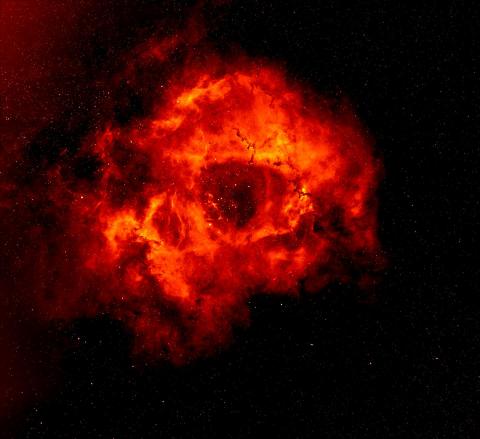The Rosette Nebula is located in the Milky Way Galaxy roughly 5,000 light-years from us and is known for its rose-like shape and distinctive hole at the center. The nebula is an interstellar cloud of dust, hydrogen, helium and other ionized gases with several massive stars found in a cluster at its heart.
A hole at the heart of the interstellar cloud has fascinated astronomers for decades and new research offers an explanation for the discrepancy between the size and age of the Rosetta Nebula's central cavity and that of its central stars. Stellar winds and ionizing radiation from these massive stars affect the shape of the giant molecular cloud. But the size and age of the cavity observed in the center of Rosette Nebula is too small when compared to the age of its central stars.
Through computer simulations, astronomers writing in
the Monthly Notices of the Royal Astronomical Society
believe the formation of the Nebula is likely to be in a thin sheet-like molecular cloud rather than in a spherical or thick disc-like shape, as some photographs may suggest. A thin disc-like structure of the cloud focusing the stellar winds away from the cloud's centre would account for the comparatively small size of the central cavity.

Rosette Nebula image is based on data obtained as part of the INT Photometric H-Alpha Survey of the Northern Galactic Plane. Image credit: Nick Wright, Keele University
The nine simulations took roughly half a million CPU hours -- the equivalent to 57 years on a standard desktop computer.
Martin Callaghan, a member of the University of Leeds Advanced Research Computing team, said, "The fact that the Rosette Nebula simulations would have taken more than five decades to complete on a standard desktop computer is one of the key reasons we provide powerful supercomputing research tools. These tools enabled the simulations of the Rosette Nebula to be done in a matter of a few weeks."





Comments